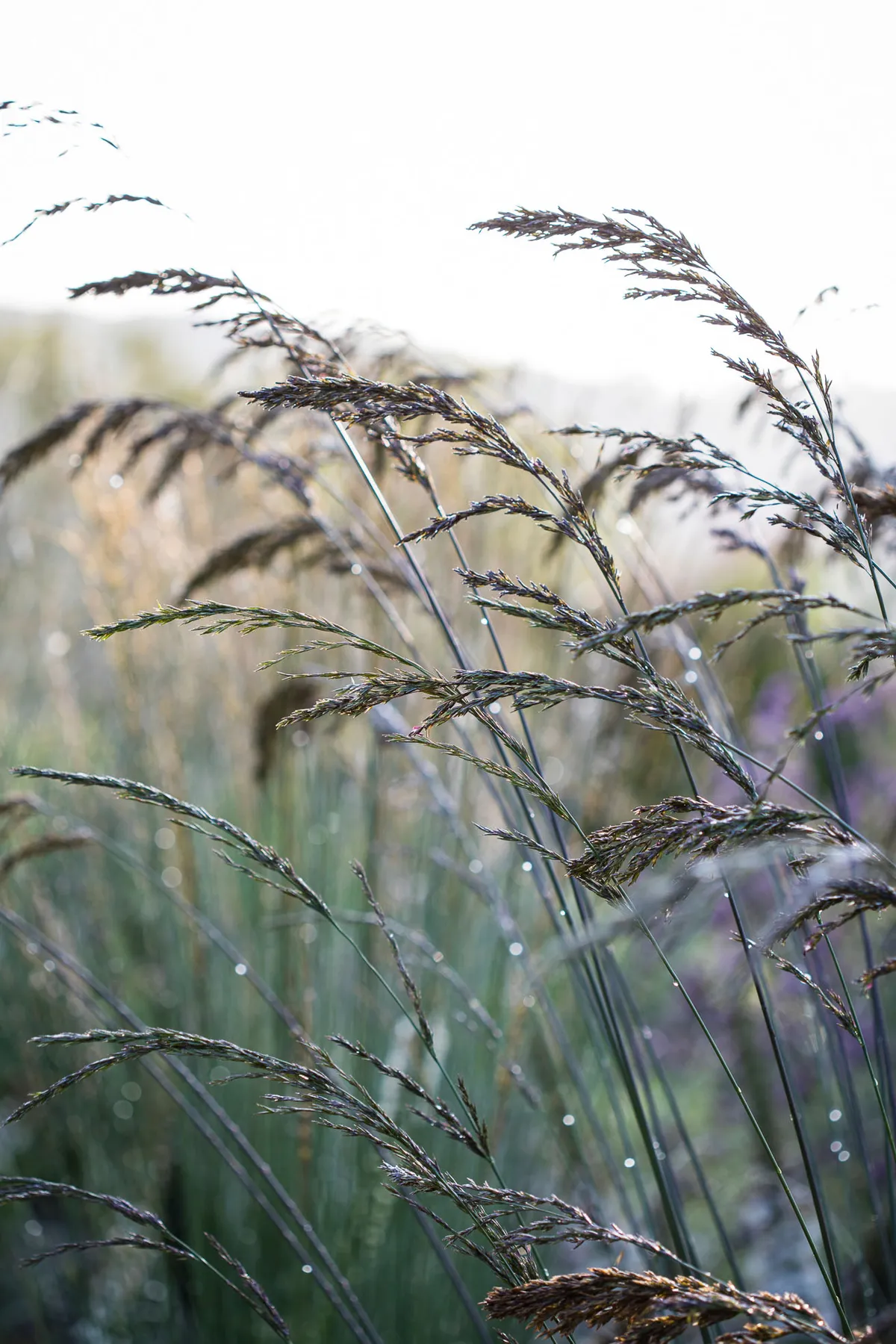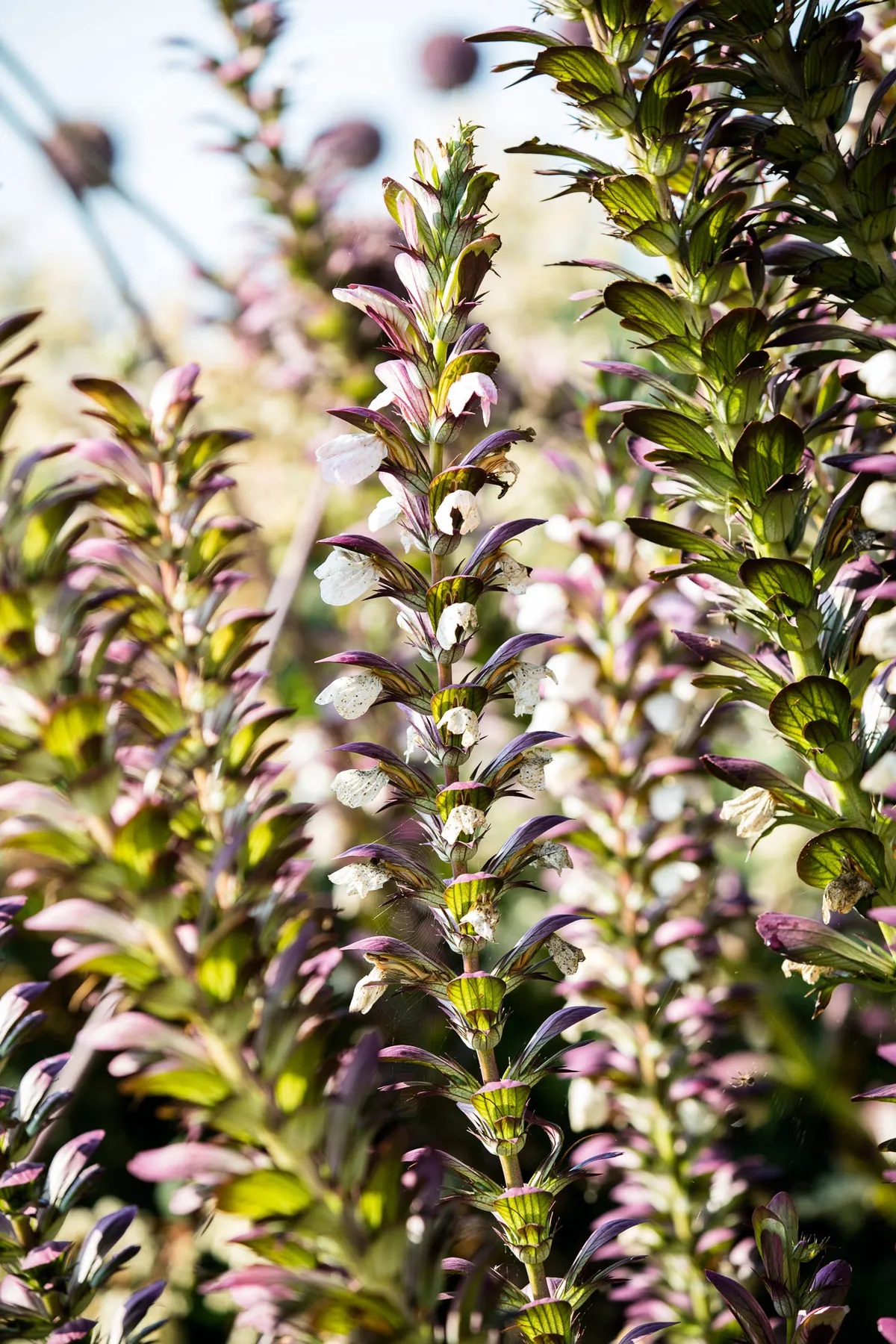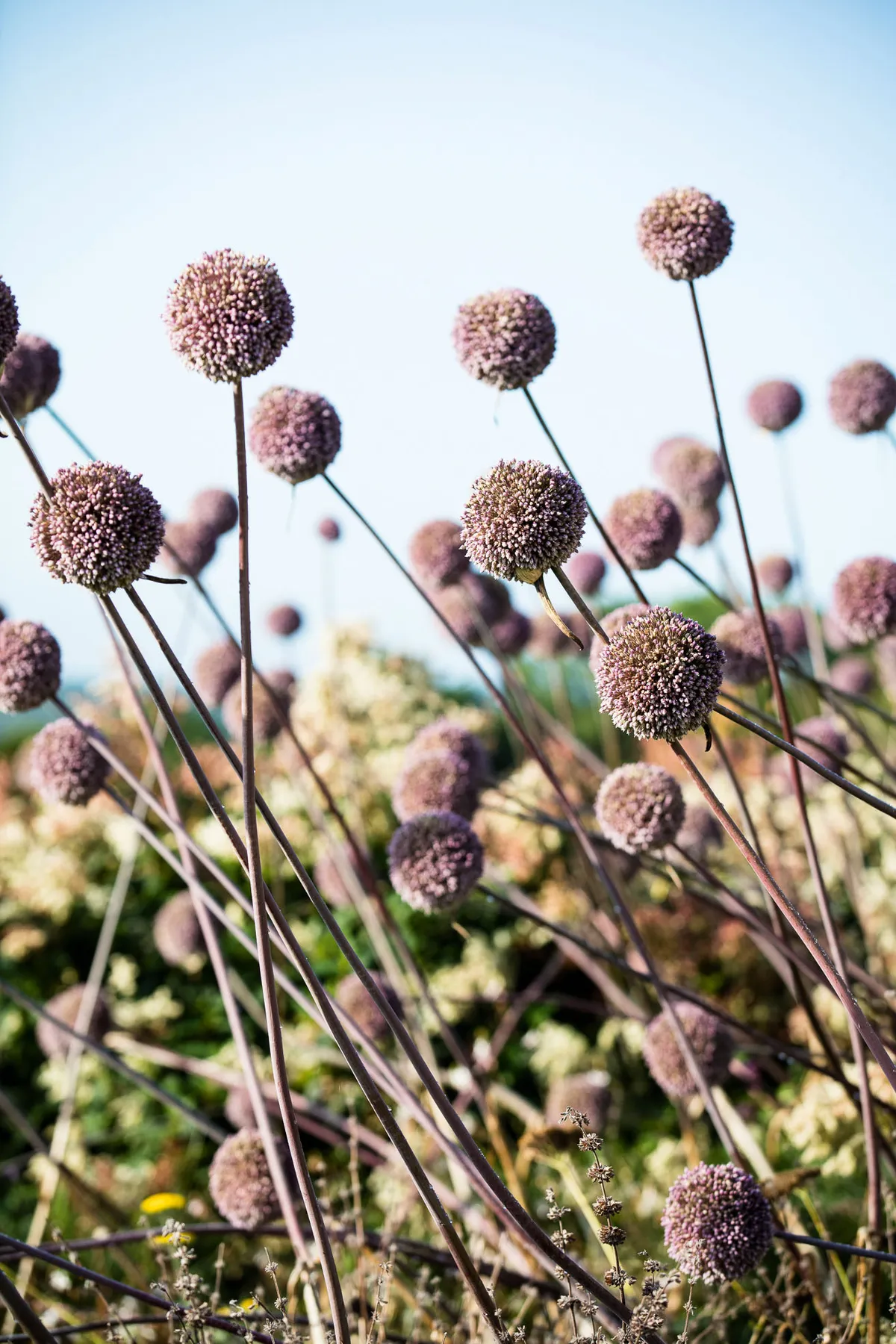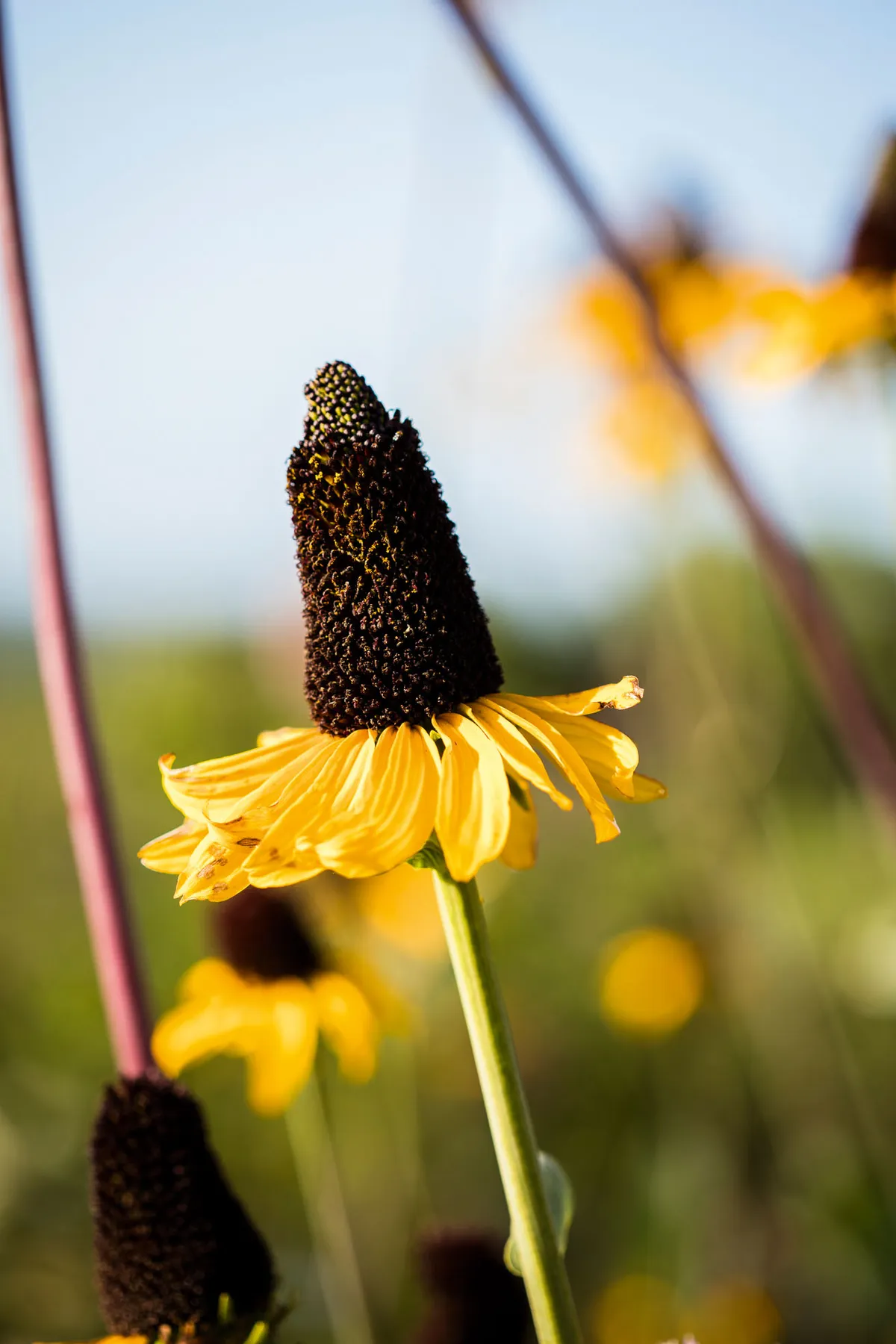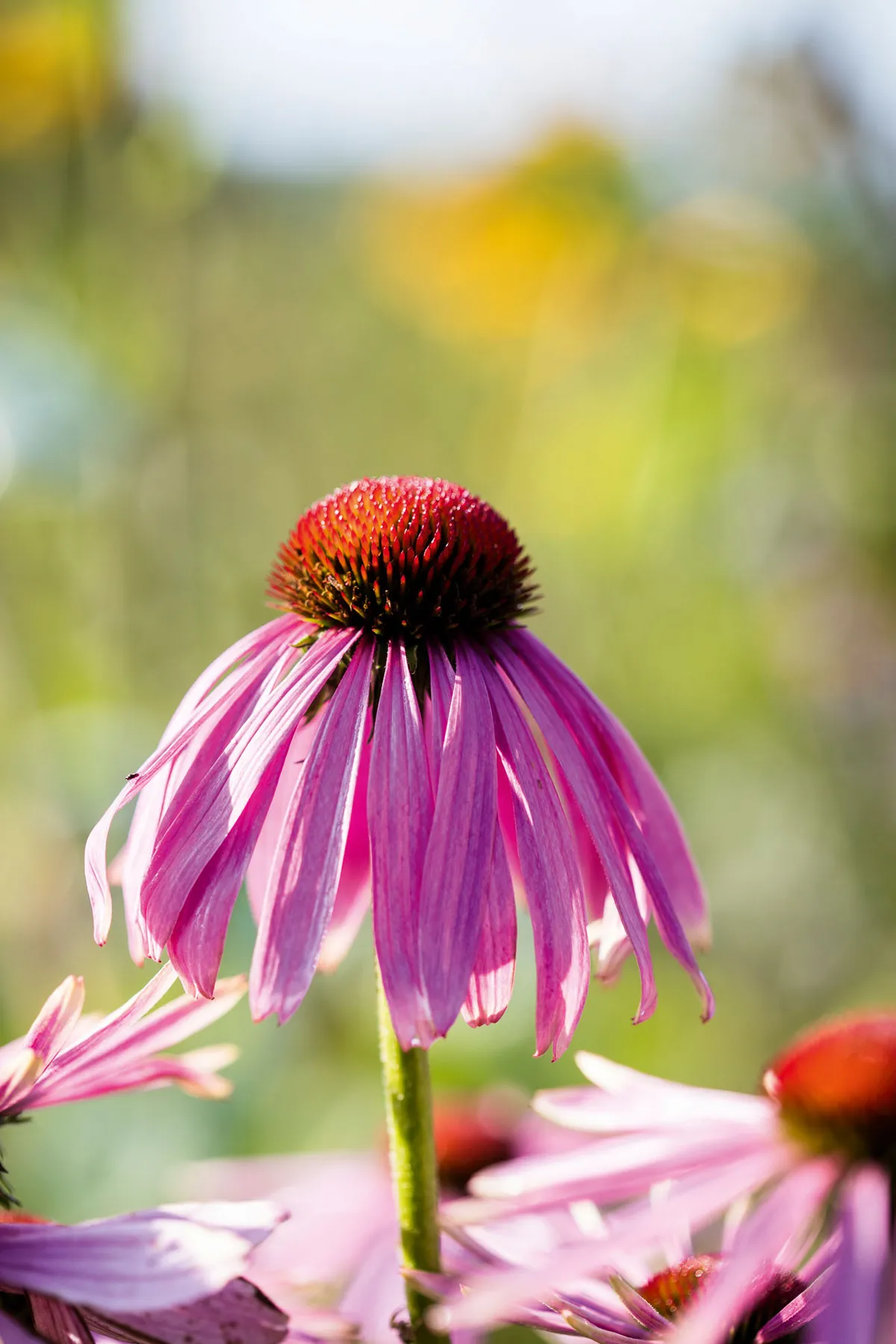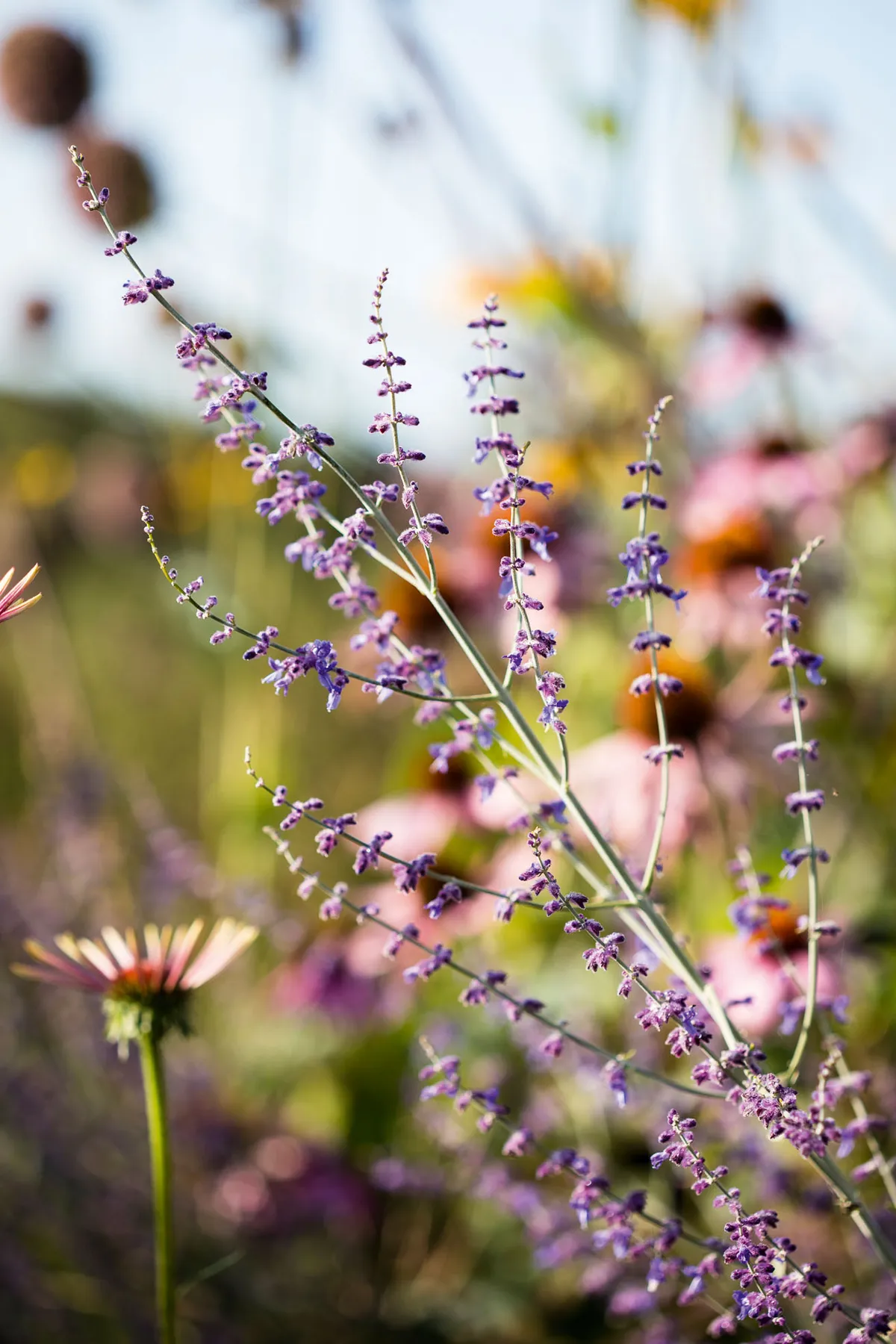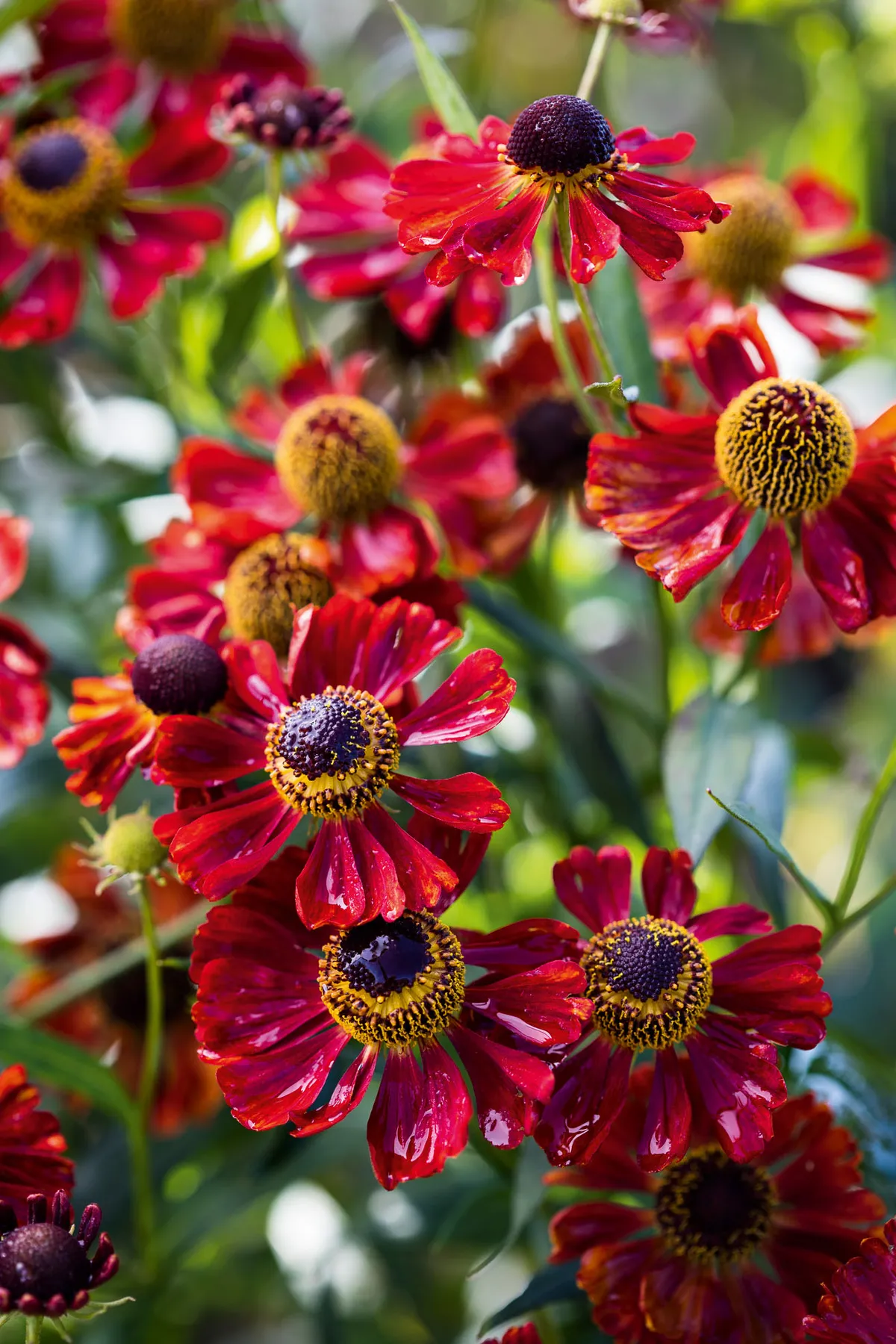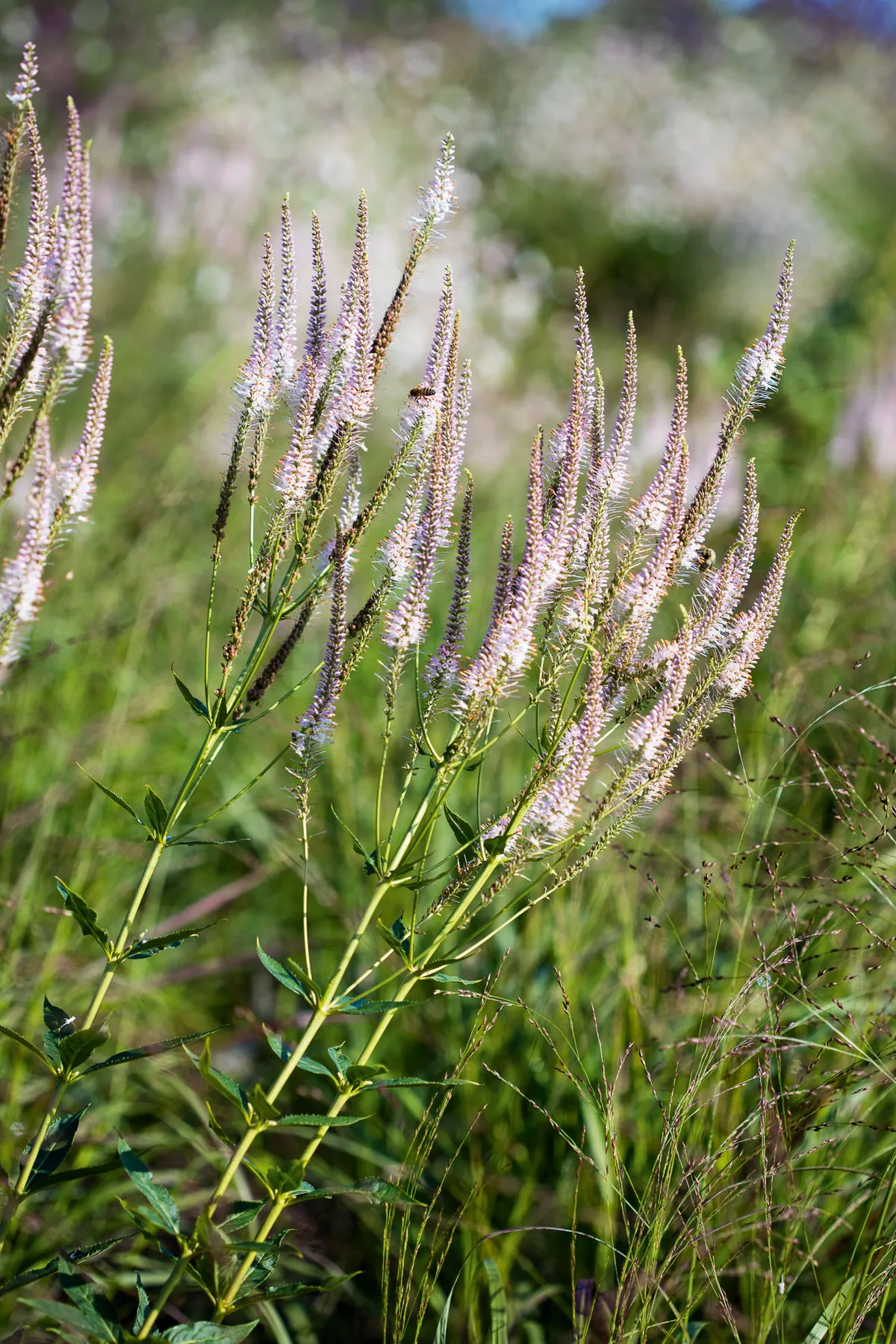So what, exactly, is a New American Garden? The curious can find out by visiting the American Museum & Gardens at Bath, where a new garden of this name opened last year and is now in the first flush of its maturity. The garden is notable because it is the only British project completed thus far by the Washington DC-based firm of Oehme, van Sweden & Associates (OvS), founded in 1977 by German plantsman Wolfgang Oehme and American landscape architect James van Sweden (both now deceased). OvS established itself early on as the distinctively American voice of what came to be known as the New Perennial Movement in naturalistic planting, later developed by Dutch designer Piet Oudolf and adopted to varying degrees by many British designers. The American version of the gardening style is considerably bolder and more robust in appearance than the European look, chiefly because of the difficulties created by extremes of climate across much of the USA.
OvS has tended to use a fairly minimal palette of plants – which it knows will survive and thrive – deployed in broad swathes and large groupings, as opposed to the rather more mingled approach of the Europeans. An American garden at the American Museum is clearly an appropriate idea, and it is fascinating to see the OvS style in a quintessentially British setting. What is more, lead landscape architect Eric Groft – who worked closely with Wolfgang and James and might be described as the ‘keeper of the flame’ of the OvS style – has used the opportunity to create a visual celebration of the development of the firm’s planting style.
As it stands, the New American Garden forms an interesting counterpoint to another nearby garden within easy reach: Oudolf Field at Hauser & Wirth, in Bruton, Somerset. A twin visit provides the ideal opportunity to compare and contrast the European and American approaches. Discover more about the American garden at the American Museum & Garden in Bath below.
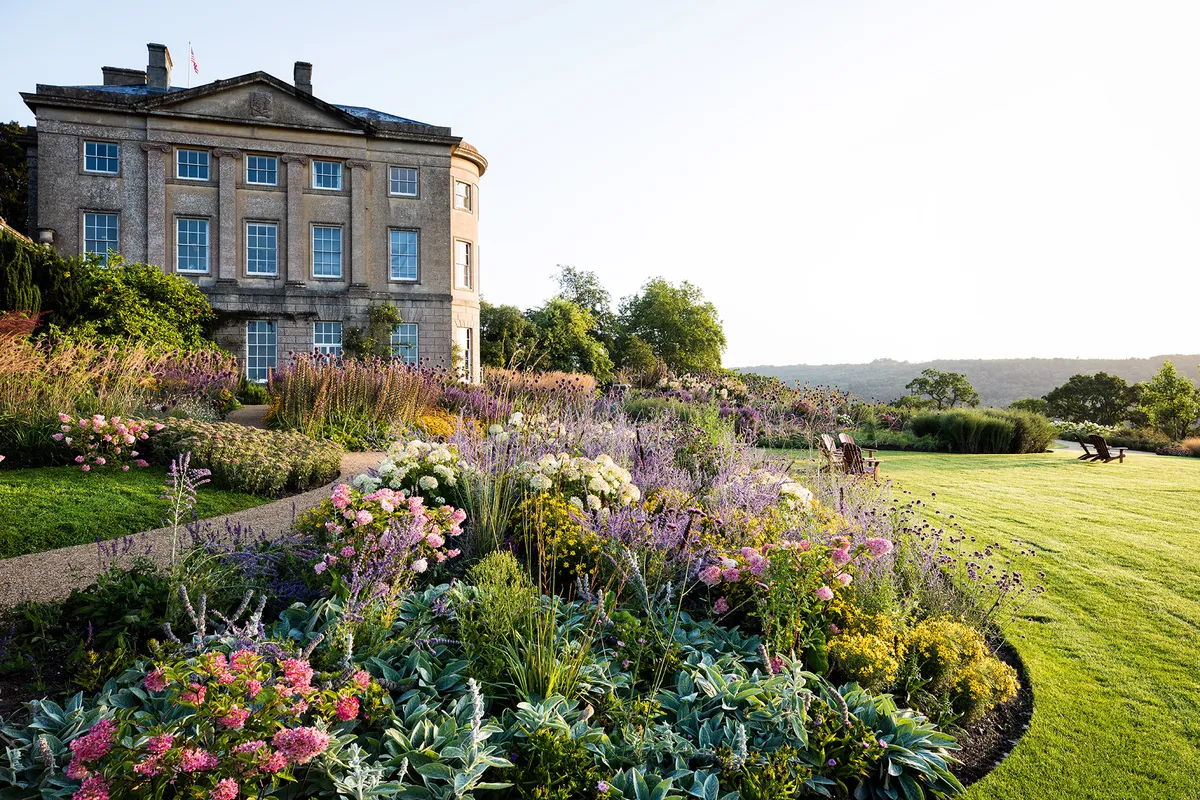
Near the American Museum colourful planting, which includes the pink Hydrangea paniculata Vanille Fraise (= ‘Renhy’), the yellow Coreopsis verticillata ‘Zagreb’ and pale-blue Perovskia ‘Blue Spire’, marks a transition from the Rose Garden to more recognisable Oehme, van Sweden perennial planting.
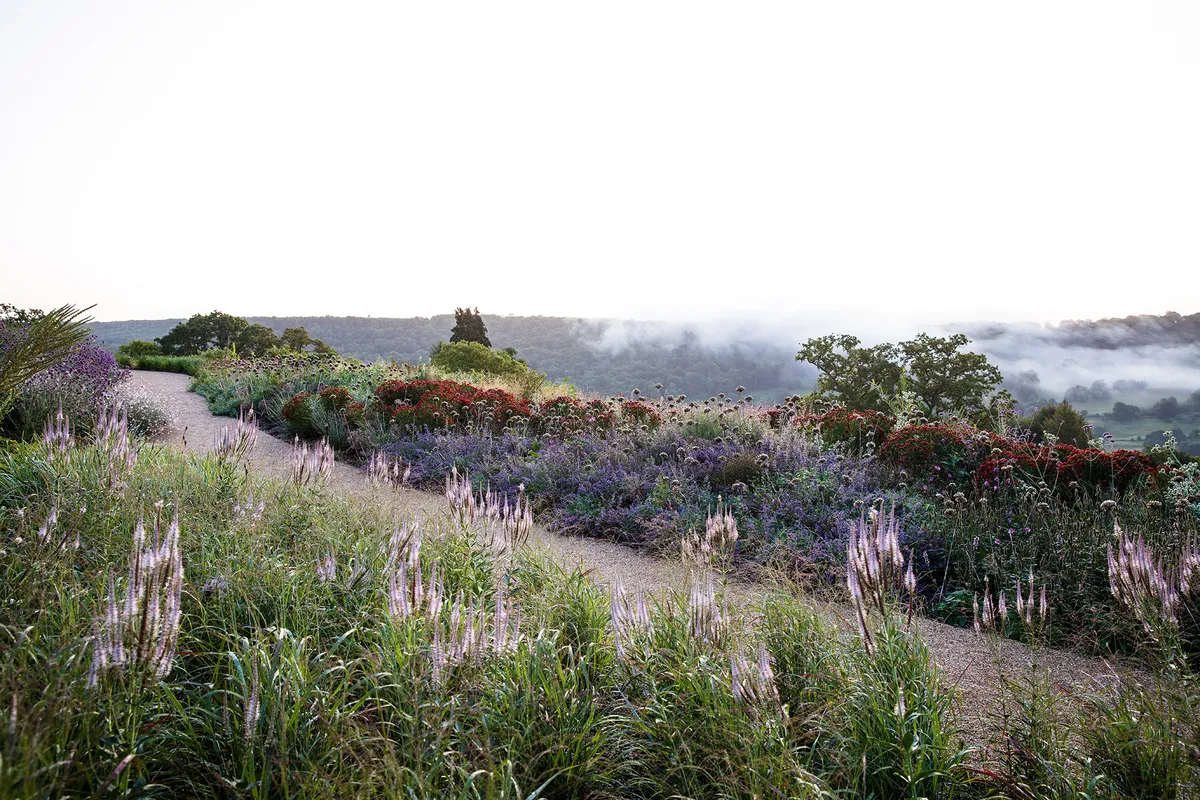
To the east of the American Museum's garden, the Winding Way allows visitors panoramic view of Limpley Stoke Valley. Here the planting references OvS’s work at the Chicago Botanic Garden, with soft plantings of Veronicastrum virginicum f. roseum and Panicum virgatum ‘Hänse Herms’, facing the blues of Nepeta racemosa ‘Walker’s Low’ and Allium ‘Silver Spring’, and red and pink of Helenium ‘Rubinzwerg’ and Persicaria amplexicaulis ‘Rosea’.
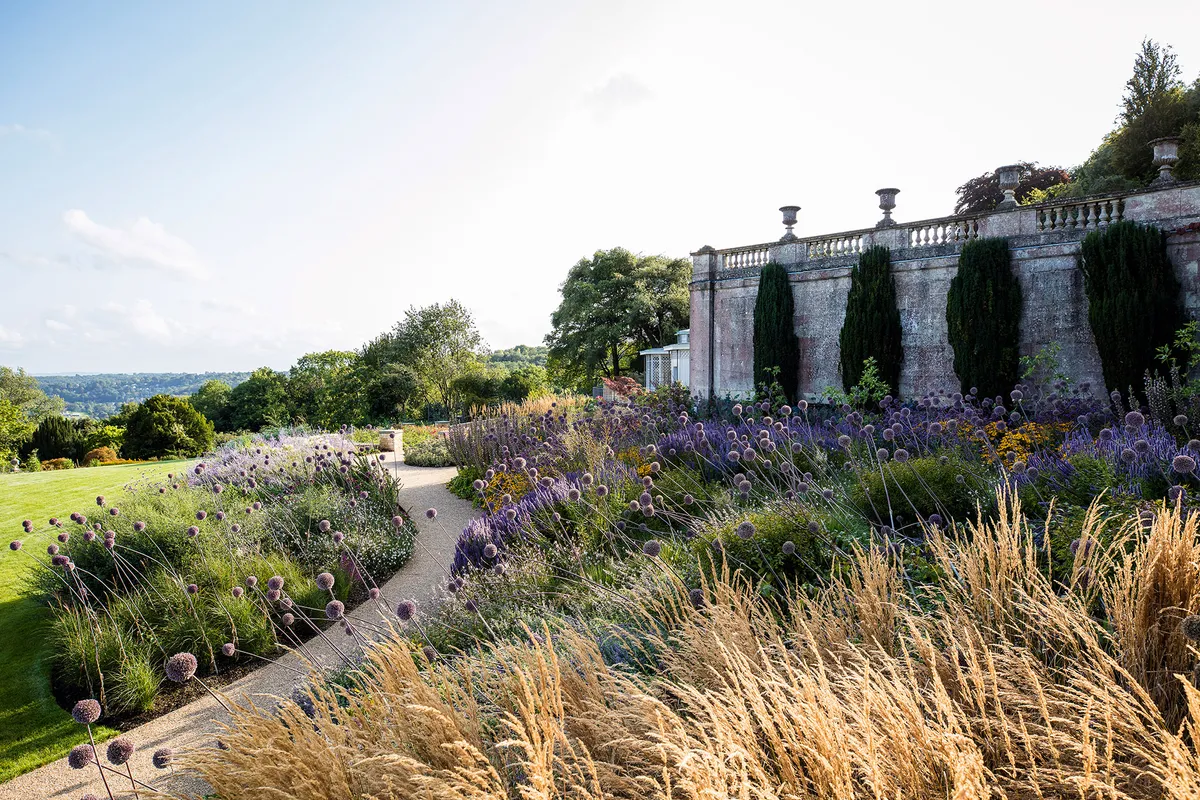
Planting along the American Museum's Winding Way or circuit walk marks the evolution of OvS style. Near the museum it features plants from the original OvS palette developed in the 1980s and early 1990s that focused on native American plants, including as here Calamagrostis x acutiflora ‘Karl Foerster’, Rudbeckia fulgida var. sullivantii ‘Goldsturm’ and Allium ‘Summer Drummer’.
The American version of the New Perennial Movement is considerably bolder and more robust
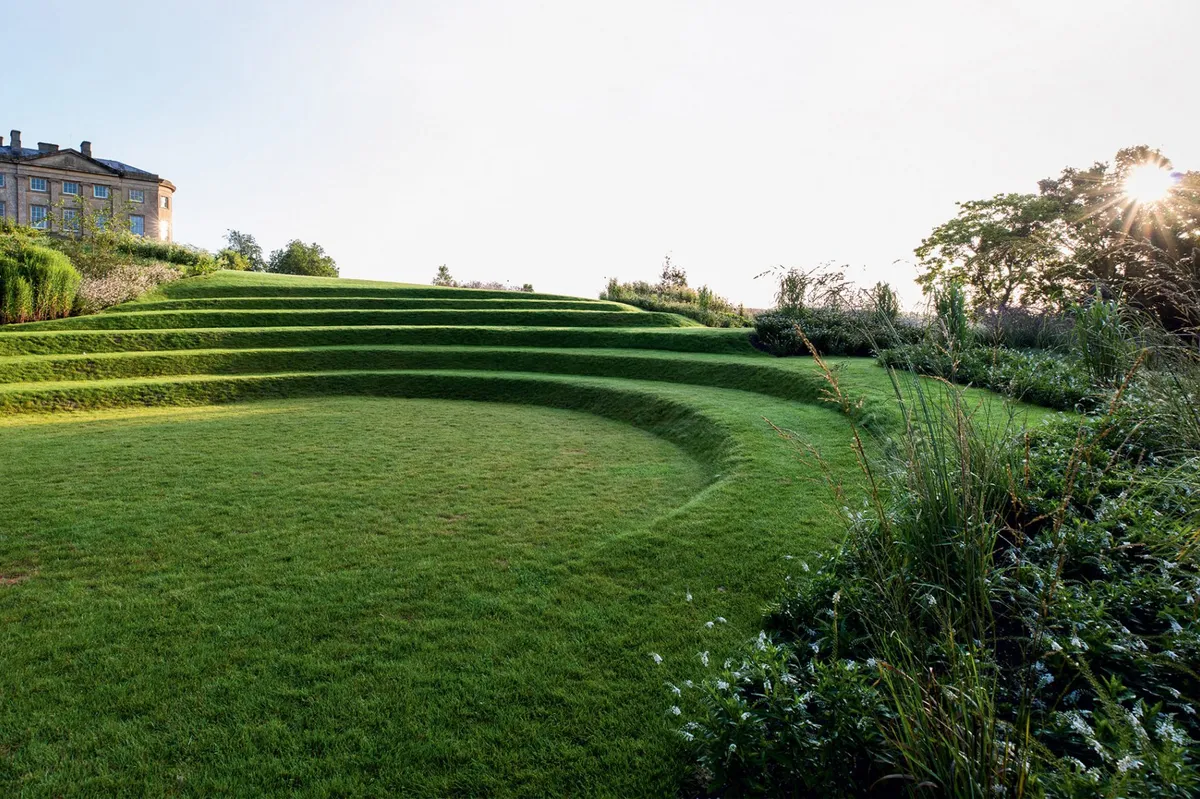
At the far south end of the American Museum's garden a turf amphitheatre lends a different note to the more colourful planting elsewhere. A simple green space edged only by white Lysimachia clethroides acts almost as a palate cleanser.
In brief
The American Museum & Gardens is a museum garden featuring American New Perennial planting in Bath that is two and a half acres of a ten-acre garden open to the public. It has highly alkaline soil with a climate that's maritime with average temperatures around 12ºC and average annual rainfall of 800mm and it is in the hardiness zone USDA 8.
USEFUL INFORMATION Address American Museum & Gardens, Claverton Manor, Bath BA2 7BD. Tel 01225 460503. Website americanmuseum.org Open Tuesday to Sunday, 11am-4pm until 22 December; 14 March to 1 November, 10am-5pm. Admission £7.50.
